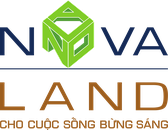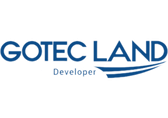Here are a few new models that property owners can learn.
Sharing coworking model
The sharing coworking space model is an advanced concept of coworking space, which is a custom designed space in a fixed position targeting small and medium business organizations.

Work café concept
Sharing coworking space is a flexible model. It is convertible for different functions. The most common practice model is at the restaurants, cafes and hotel lounges. In addition to performing the main business function in the morning or afternoon, it is switched to a shared work space in the evening or night. The targeted client of this model is individual customers who demand a fully flexible work schedule.
Sharing coworking space is becoming more and more popular due to the flexibility in terms of location, time and special targeted clients. This model maximizes profits by exploiting maximum available facilities available at the property, not wasting any space or time and taking full utilization of each square meter. In addition to the main business function, the property is converted into shared work space to earn extra income.
The potential of coworking spaces is huge with an average growth rate of over 50% per year within the past five years. The value of coworking space companies also increases rapidly to ‘vertigo’.
In Vietnam, according to CBRE's report for the first six months of 2017, the coworking space segment saw 17 new operators opening 22 locations with a total area of 14,500 m2. To the end of Q1 2018, the number of co-working operators has increased to 40, providing to the market 50 coworking centers with a total area of about 30,000 m2. Thus, in just nine months, the coworking space market in Vietnam has grown 127% in locations and 107% in terms of sqm occupied.
The growth rate in Vietnam exceeds the world’s average rate. Because Vietnam is in the golden period of population growth, the young labor force is extremely crowded. In Vietnam, 91% of coworking users are Generation Y and under 35, which is 67% higher than the global average.
At the same time, Vietnam's economy is in a booming stage, introducing many new trends in the world. Thus, the labor force requires free workspace, conveniences, easy sharing, and stimulating creativity.
Hotels using the miniature farmland model
Some new models to utilize space have been applied in the world, such as holding algae farms or honey bee farms on a hotel's rooftop. In conjunction with that, the owner of the property organizes tours of the ‘miniature farm’ at the hotel. The idea is not extraordinary but can really spark customer’s interest. Many hotels have increased room bookings remarkably after the successful construction of the ‘miniature farm’ model.

Planting flowers on hotel rooftop
This model maximizes profits by utilising the free space on the property and generating revenue from the sale of farm products to customers. The model is still new in Vietnam but has been implemented in world famous properties such as Ganier Opera in Paris, the chain of Intercontinetal hotels in France, Hawaii, US and other well known properties.

Honey bee farm on the hotel rooftop
Technology application in construction model
Appling technology in construction can help developers minimize the construction cost. The introduction of robots and machines has greatly assisted in construction progress. The higher the level of technology application in construction creates lower costs in labor, higher optimization of materials, shorter construction time, and lower risks at construction sites.
In developed countries, simple brick-and-mortar building duties have been replaced by robots, or even using modular construction.
In Australia, since 2016, robots have been able to build the wall of a house within two days, reaching speeds of up to 1,000 bricks per hour, without time off. The wall frame is constructed to ensure the correct design of the doors and empty space to run the electrical system. By reducing construction costs, revenue from the property increases.

A robot is builing brick wall
In addition to reducing the cost of construction, the application of technology is an indispensable trend in property development for the future. Technology is increasingly supporting people more in every aspect of life. Even car manufacturers are offering vehicles with automatic parking technology, electric cars, and even automatic car chargers.
In the near future, automatic shopping application in supermarkets and automatic deliveries will also be launched, which will save more time for the busy life. The introduction of such smart technology means that properties will need to be designed to remain compatible, such as including parking lots suited for automatic parking cars, auto-charging equipment, and possibly even space for a shopping robot.
If the developers are not fully prepared for the rapid changes in technology of the future from the design stage, the property can be difficult to exploit, or cost more money and time to upgrade accordingly.
These above models are not yet fully implemented in Vietnam giving developers time and several lessons on ways of improving the quality and services of their properties.





















